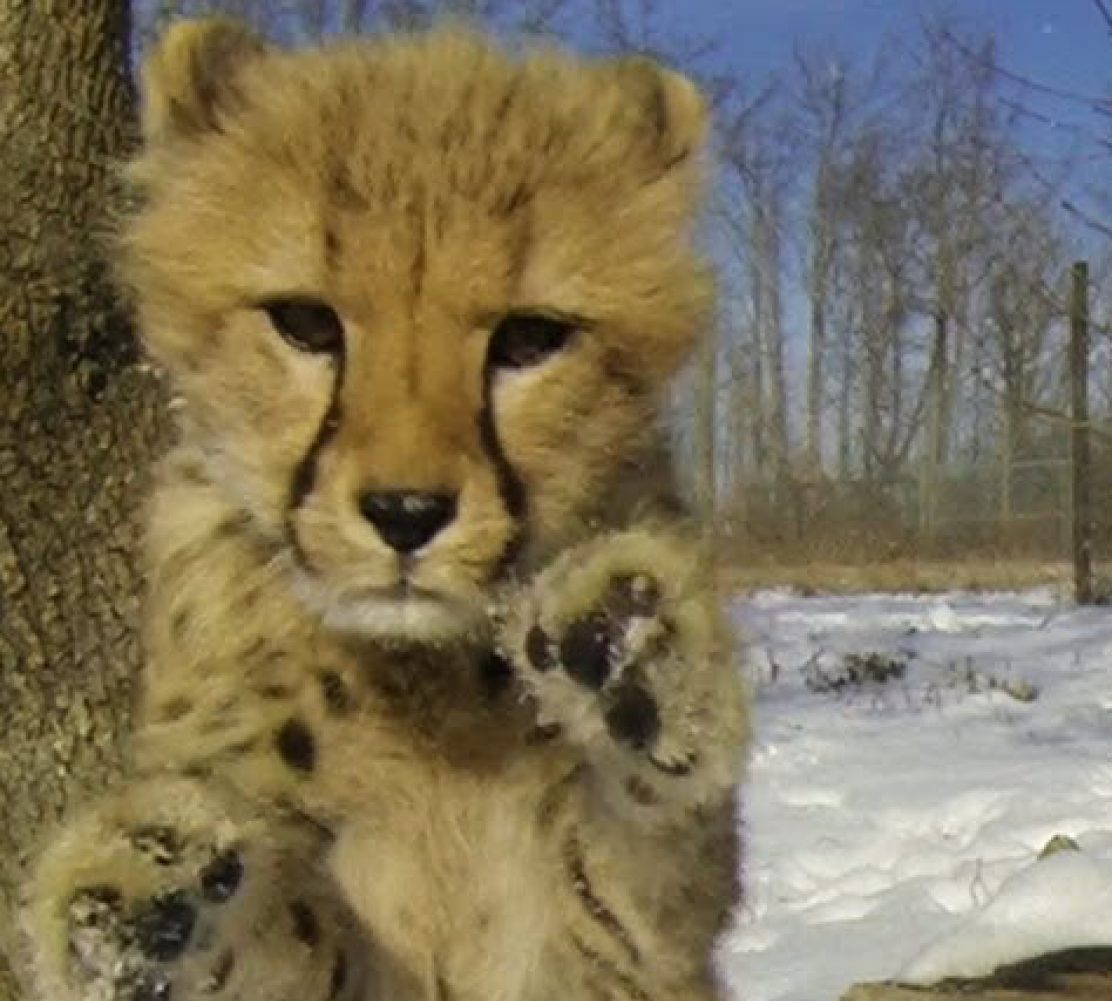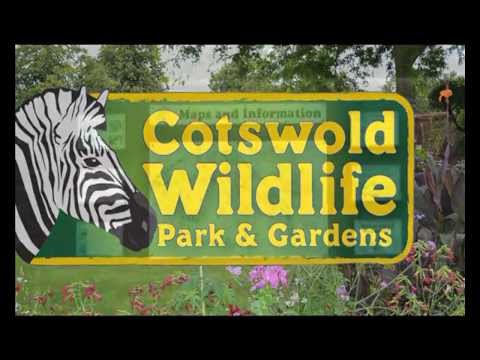Cotswold Wildlife Park Cams
Visited by over 350,000 people in 2011, the Cotswold Wildlife Park & Gardens is home to more than 260 species of animals. Sited on 0.65 km2 or landscaped parkland and gardens south of Burford, Oxfordshire, England, the Cotswold Wildlife Park & Gardens is recognized as the largest privately owned zoological collection in the UK.
Interesting Facts About Cotswold Wildlife Park & Gardens
• The Cotswold Wildlife Park Walled Garden houses a Humboldt penguin enclosure, a Tropical House exhibit including exotic plants and free-roaming sloths, along with an aviary featuring several species of tropical birds including, bleeding heart pigeons, Bali starlings and great blue turacos. The Zoo’s Penguin feeding and talk is performed daily at 11 am and 3 pm. Walled Garden which also features a group of Oriental small-clawed otters, prairie dogs, meerkats, and yellow mongooses is also home to a collection of small primates including, emperor tamarins, pygmy marmosets, squirrel monkeys and red-handed tamarins.
• In 2008 the Park opened it’s walk-through Madagascar exhibit highlighting the endangered lemur species as well as featuring Madagascar teal and radiated tortoise, ring-tailed lemurs, mongoose lemurs, collared lemurs, and crowned sifaka.
• Cotswold Wildlife Park & Gardens Woodland Walk accessible by way of a bridge over the lake is home to a number of larger animal species native to South America including, giant anteaters, Brazilian tapir, capybara, Patagonian maras, and Visayan warty pigs. Other exhibits featured in the Woodland Walk include, Canadian timber wolves, parma wallabies, white-naped cranes, as well as a wide variety of Chilean flamingos and ducks.
• The Park’s large moated enclosures are home to Chapman’s zebra, ostriches, white rhinoceros, Bactrian camels and a trio of giraffe. Neighboring the moated enclosure is the Zoo’s big cat exhibit housing Asiatic lions, and clouded leopards.
• Cotswold Park’s Reptile House is home to several reptilian species including, bearded dragons, black mambas, reticulated pythons, anacondas, poison dart frogs, rhinoceros iguanas and crocodile monitors.
• In 2007 Cotswold Park achieved the first UK breeding for Morelet’s crocodiles by successfully hatching 12 eggs.
Cotswold Park Insect House houses several species of invertebrates including, scorpions, leaf-cutter ants, and tarantulas.
• Cotswold Park’s Bat House is home to a number of bat species including, Egyptian fruit bats, and Seba’s short-tailed bats as well as its collection of Turkish spiny mice in the Reptile Courtyard and neighboring enclosures for white-handed gibbons and siamangs.
• Next to the 600 year-old oak tree around the Manor House and just outside the Park’s orangery is a red panda exhibit. Just in front of the Manor House beside the rhino paddock is an Aldabra giant tortoise exhibit, while the Park’s picnic area, restaurant and Skymaze adventure playground is located just behind the Manor House.
• Cotswold Park’s railway station area features several species of birds of prey including, the great grey owl, snowy owl, and turkey vulture. Close to the station is an enclosure used to house the Park’s collection of black-and-white colobus monkeys.
• In 2012 the Park witnessed the first wolverine cubs to be born in captivity in the UK and the only collection in Europe at its wolverine enclosure next to the railway station which is also located close to the Park’s pheasant aviaries.
• Designed as a replacement for an original 17th-century Jacobean residence, Cotswold Park’s Manor House was first built in 1804 by the then estate owner William Hervey. Many of the trees which were planted by Hervey can still be seen today at the park including a large Wellingtonia tree on the Park’s west lawn. The tree which stands at over 40 meters high is visible from the skyline several miles away.
• In 1923 the estate was purchased by Colonel Heyworth-Savage, who upon his death in 1948 passed estate to his grandson John Heyworth. The house which was rented by the Oxford Regional Hospital Board for twenty years was later opened to the public in 1969 by Heyworty and since 1970 the house has served as the heart of the Wildlife Park.
• John Heyworth was born in the Manor House in 1925. After leaving school he enlisted in the Royal Dragoons regiment serving between 1943–1947.
• First used as a kitchen garden, Walled Garden today houses the Park’s marmosets and tamarins. Cotswold Park’s Tropical House replaces three neighboring greenhouses, the first used for carnations, the second for housing rare hot-house plants and a fig tree, and the third which was used for nectarines and peaches.
• Besides serving as a visitors area the Park’s Manor House now has various roles. The old dining room today serves as a brass-rubbing centre; the drawing room used for exhibitions and meetings; the library has become a bar area; the original kitchen has been transformed into a storage area and self-contained flat; while the other rooms are now used for administration, maintenance offices, and accommodations for staff.
• In 1974 the Park built a horse-shoe railway circuit from the current station to the giant tortoises in front of the Manor House. In 2007 the circuit was rebuilt and officially opened by the local M.P., the Rt. Hon. David Cameron.
• Cotswold Park is renown for its exotic plants, especially those housed in the suitable micro-climate of the Walled Garden such as its cannas and bananas.
• Cut regularly for the browse for the Park animals, bamboo is a distinct favorite of which there are over fifty varieties.
• The Cotswold Park as of 2006 houses 40 species which are either part of an European Endangered Species Program or European Studbook. The park which is the studbook holder for the Mount Omei babbler and red-crested turaco also monitors the blue-winged kookaburra and crested pigeon.
• In 2015 the Park witnessed the birth of a second White rhinoceros.
Cotswold Wildlife Park & Gardens Webcams
Cotswold Wildlife Park Meerkats
Click on the link below and watch these meerkats sun themselves during the colder months under their warm lamp, chase each other and play together, or take turns to look out for prey.
View Cotswold Wildlife Park Meerkats webcam.
Cotswold Wildlife Park Penguin Webcam
Click on the link below and view the Park’s penguin enclosure. From this well positioned camera you can watch the Park’s Penguins as they swim, walk next to the water, visit their nesting boxes or interact during the regular visits from their keepers.
Watch the daily Penguin feeds at 11.00am and 15.00pm.
View Cotswold Wildlife Park Penguin webcam.
Zoo Camera Tags:
- Cotwolds live cam

